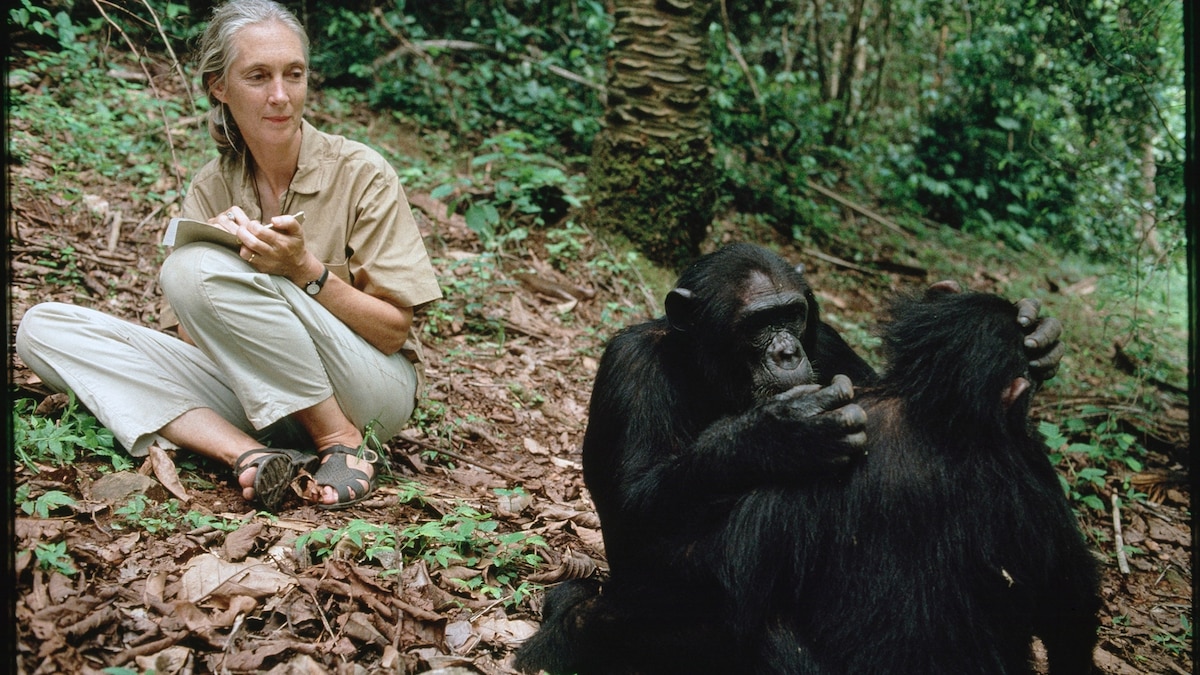
National Geographic helped the famous primatologist get her start—and followed her chimpanzee research and conservation work in a career that forever changed how we understand animal behavior.
Dr. Jane Goodall, DBE, the famous conservationist and ethologist, has died at age 91 after a legendary career illuminating the complex social lives of chimpanzees and advocating for animal and environmental rights. At a time when women were discouraged from careers in science, Goodall became one of the most recognized scientists of her time after receiving support from the National Geographic Society to study chimpanzees in 1961.
Her groundbreaking research unveiled many social and emotional connections between humans and apes. While living among chimpanzees at Gombe Stream Game Reserve in Tanzania, she observed nurturing mothers, bullying alpha males, and gestures of friendship as well as violence. She was the first person to observe chimpanzees using sticks as tools. In later years she turned her fieldwork over to colleagues to focus on her missions of sustainability and kindness to animals. The nonprofit she formed, Roots & Shoots, had the goal of stopping environmental destruction. She won numerous prestigious awards throughout her career. Her legacy will endure in the way we view ourselves in relation to animals.
In memory of Jane’s amazing life and contribution to our understanding of the natural world, National Geographic will screen the feature documentary “Jane” in the U.S. on Sunday October 5 at 8 e/c. This will be followed by “Jane: The Hope” at 10 e/c.
Directed by Brett Morgen with music by composer Philip Glass, the feature documentary “Jane” uses never before seen footage to tell Goodall’s life story. Stream the film now on Disney+.



